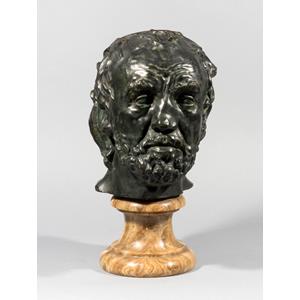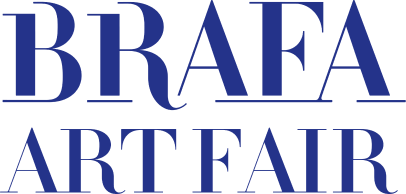DÉTAILS DE L'IMAGE

Galerie Nicolas Bourriaud
Auguste Rodin (Paris 1840-1917 Meudon)
L'homme au nez cassé, masque - type II 2e modèle (1903)
Bronze with black-green patina
H 25.5 x W 20 x D 21.5 cm
Total height with onyx pedestal: 37.5 cm
Signed: A. Rodin and marked: A. Rodin in relief on the inside
Cast by Alexis Rudier, bears the founder's signature, circa 1926
Rodin was very attached to this early work in which his future personality was already revealed: "This mask," he told Bartlett, 'determined all my future work. It was the first good sculpture I made... I have never succeeded in making a figure as good as the Broken Nose'. The work takes as its starting point the portrait of an old habitué of the Saint-Marcel district, where Rodin had moved in May 1863. The man, who earned his living doing odd jobs of all kinds, was known as "Bibi"... His portrait was probably made at the end of 1863.
Rodin's genius was able to perceive a beauty linked to character, expression and the rendering of emotions. The first work by the sculptor to be accepted at the Salon, it announces his taste for real life and strong expression. "In his interviews with M. Dujardin-Beaumetz (L'art et les artistes. Essai biographique, April 1914), he admitted that "I have never done more or better in terms of persistence in study, or sincerity in the execution of modelling. Although he had perhaps not yet read Baudelaire, he applied this principle, which he formulated as follows in 1907: "As it is solely the power of character that makes Art beautiful, it often happens that the uglier a being is in nature, the more beautiful it is in Art.



 TÉLÉCHARGER L'IMAGE
TÉLÉCHARGER L'IMAGE